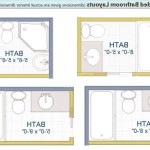How To Fix Bathroom Wall Panels Over Tiles
Bathroom renovations can often be a costly and time-consuming undertaking. Many homeowners explore methods to update their bathrooms without undergoing complete demolition. Installing wall panels over existing tiles is one such technique, offering a relatively quick and less disruptive solution to refresh the aesthetic of a bathroom. While seemingly straightforward, successfully fixing wall panels over tiles requires careful preparation, proper material selection, and meticulous installation to ensure a long-lasting and aesthetically pleasing result. This article provides a comprehensive guide to fixing bathroom wall panels over existing tiles, addressing key considerations and necessary steps.
The primary advantage of installing wall panels over tiles is the minimization of demolition. Removing existing tiles can be a messy and labor-intensive process, often generating significant dust and debris. Moreover, it can potentially damage the underlying wall structure, necessitating further repairs. By opting to install panels over the tiles, homeowners can avoid these complications and reduce the overall project timeline and associated costs. Wall panels offer a variety of design options, allowing for a wide range of aesthetic possibilities to be incorporated into the space. They are available in various materials, colors, patterns, and textures, catering to diverse design preferences. Many wall panels are also designed with interlocking systems, simplifying the installation process and creating a seamless, watertight finish.
However, this method also presents certain challenges. The added thickness of the panels can reduce the overall space in the bathroom, particularly in smaller bathrooms. Improper installation can lead to moisture buildup behind the panels, potentially causing mold growth and material degradation. Furthermore, the existing tiles must be in relatively good condition to provide a stable base for the panels. Extensive cracking, loose tiles, or uneven surfaces can compromise the integrity of the panel installation.
Key Considerations Before Installation
Before commencing the installation process, several crucial factors must be carefully assessed to ensure a successful outcome. These considerations include inspecting the existing tile condition, selecting appropriate wall panels, and preparing the tiled surface.
Assessing Existing Tile Condition: The first step involves a thorough inspection of the existing tiled surface. Look for any signs of damage, such as cracks, chips, or loose tiles. Repair any damaged tiles before proceeding. Loose tiles should be re-adhered to the wall using appropriate tile adhesive. Significant cracking or instability may necessitate the removal and replacement of the affected tiles. The overall flatness of the tiled surface is also critical. Large variations in surface level can create unevenness in the installed panels, compromising the aesthetic appeal and potentially affecting the watertight seal.
Selecting Appropriate Wall Panels: The choice of wall panels depends on various factors, including budget, desired aesthetic, and the level of moisture resistance required. Common materials for bathroom wall panels include PVC, acrylic, and composite materials. PVC panels are a popular choice due to their affordability, water resistance, and ease of installation. Acrylic panels offer a more premium look and are known for their durability and scratch resistance. Composite panels combine the benefits of different materials, providing a balance of strength, water resistance, and aesthetic appeal. Consider the panel thickness, as thicker panels offer greater rigidity and impact resistance. Also, ensure the panels are specifically designed for bathroom use and are waterproof or water-resistant. Select panels that are easy to clean and maintain, as this is crucial in a bathroom environment.
Preparing the Tiled Surface: Proper surface preparation is essential for ensuring a strong and lasting bond between the wall panels and the existing tiles. Begin by thoroughly cleaning the tiled surface with a degreasing cleaner to remove any soap scum, dirt, or grime. Rinse the surface with clean water and allow it to dry completely. Lightly sanding the tiled surface can improve adhesion by creating a slightly rougher texture. However, avoid excessive sanding, as this can damage the tiles. Filling in grout lines with a suitable filler can create a smoother, more uniform surface for panel adhesion. This also prevents the grout lines from being visible through thinner panels. Once the filler is dry, sand it flush with the tile surface. A primer specifically designed for use on tile can further enhance adhesion. Apply the primer according to the manufacturer's instructions and allow it to dry completely before proceeding with panel installation.
Installation Process: Step-by-Step Guide
The installation process involves several steps, including measuring and cutting panels, applying adhesive, fitting panels to the wall, and sealing the edges. Precision and attention to detail are critical for achieving a professional-looking and watertight finish.
Measuring and Cutting Panels: Accurate measurements are crucial for a seamless panel installation. Measure the height and width of the wall area to be covered, taking into account any obstacles such as windows, doors, or fixtures. Transfer these measurements to the wall panels and use a sharp utility knife or a circular saw with a fine-tooth blade to cut the panels to size. Ensure the cuts are clean and straight. For angled cuts or irregular shapes, use a jigsaw or a coping saw. Dry-fit the panels against the wall to check for accuracy before applying adhesive. Make any necessary adjustments to ensure a perfect fit. Remember to leave a small expansion gap around the perimeter of the panels to allow for thermal expansion and contraction.
Applying Adhesive: Select a high-quality adhesive specifically designed for bonding to tiles and the chosen wall panel material. Apply the adhesive evenly to the back of the panels using a notched trowel. Follow the adhesive manufacturer's instructions regarding the amount of adhesive to apply and the recommended trowel notch size. Avoid applying too much adhesive, as this can cause it to squeeze out between the panels and the tiles. Alternatively, many panels can be fixed with mechanical fixings such as screws or nails that are appropriate for the substrate and panel materials.
Fitting Panels to the Wall: Carefully position the first panel against the wall, aligning it with the measured marks. Press firmly and evenly across the entire surface of the panel to ensure good contact with the adhesive. Use a rubber mallet to gently tap the panel into place. For panels with interlocking systems, ensure the edges are properly aligned and interlocked. Use spacers to maintain consistent spacing between the panels. Continue installing the remaining panels, working systematically across the wall. Periodically check the panels for level and plumb using a spirit level. Make any necessary adjustments before the adhesive sets. Wipe away any excess adhesive immediately with a damp cloth.
Sealing the Edges: Sealing the edges of the panels is crucial for preventing water penetration and mold growth. Apply a bead of silicone sealant along all the edges of the panels, including the top, bottom, and sides. Use a sealant specifically designed for bathroom use, as these are typically mildew-resistant. Smooth the sealant with a sealant smoothing tool or a wet finger to create a neat and professional finish. Wipe away any excess sealant with a damp cloth. Allow the sealant to cure completely according to the manufacturer's instructions before exposing the panels to water. Consider using trim pieces to cover the edges of the panels for a more finished look. These trim pieces can be made of PVC, aluminum, or other materials and are available in various colors and styles.
Addressing Potential Issues
Even with careful planning and execution, certain issues may arise during or after the installation process. Addressing these issues promptly is essential for ensuring the long-term performance of the wall panels.
Uneven Surfaces: If the existing tiled surface is uneven, this can create challenges during panel installation. Shimming the panels behind the low spots can help to create a more uniform surface. Use plastic shims to avoid moisture absorption. Consider using a self-leveling compound to flatten the tiled surface before installing the panels. However, this will add to the overall project time and cost.
Moisture Buildup: Moisture buildup behind the panels can lead to mold growth and material degradation. Ensure proper ventilation in the bathroom to reduce humidity levels. Consider installing a dehumidifier to further control moisture. Regularly inspect the panels for signs of water damage, such as discoloration or swelling. Re-seal any damaged or compromised sealant joints promptly.
Panel Damage: Accidental damage to the panels can occur during or after installation. Minor scratches or dents can often be repaired with matching repair products. For more significant damage, the affected panel may need to be replaced. Contact the panel manufacturer or supplier for replacement panels.
Properly fixing bathroom wall panels over existing tiles can be a cost-effective and efficient way to update a bathroom. By carefully considering the existing tile condition, selecting appropriate wall panels, and meticulously following the installation process, homeowners can achieve a durable, aesthetically pleasing, and watertight finish. Addressing potential issues promptly is crucial for ensuring the long-term performance and enjoyment of the renovated bathroom space.

Can You Put Bathroom Wall Panels Over Tiles Igloo Surfaces

Panel Over Tiles The Bathroom Marquee
Fitting Pvc Wall Panelling Over Bathroom Tiles Guru
Fitting Pvc Wall Panelling Over Bathroom Tiles Guru
Fitting Pvc Wall Panelling Over Bathroom Tiles Guru

Panel Over Tiles The Bathroom Marquee

Fitting Shower Wall Panels Over Tiles

How To Cover Dated Bathroom Tile With Wainscoting

Panel Over Tiles The Bathroom Marquee

Fitting Pvc Wall Panelling Over Bathroom Tiles Guru
Related Posts







